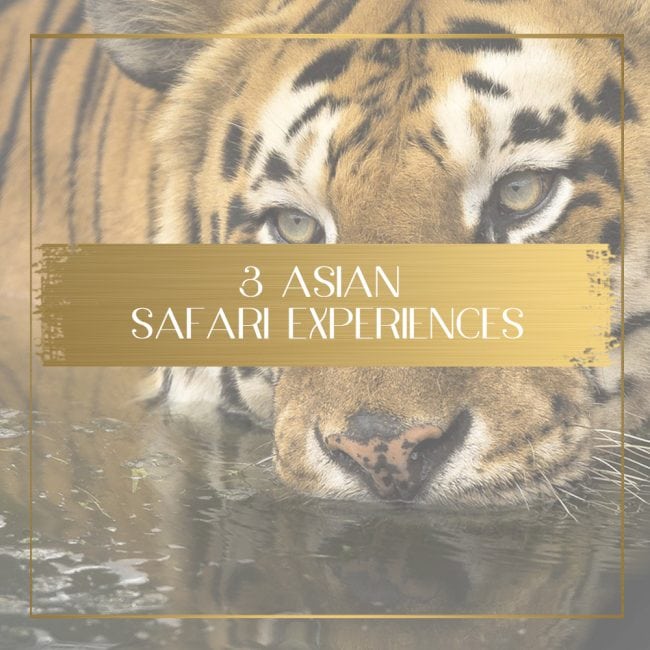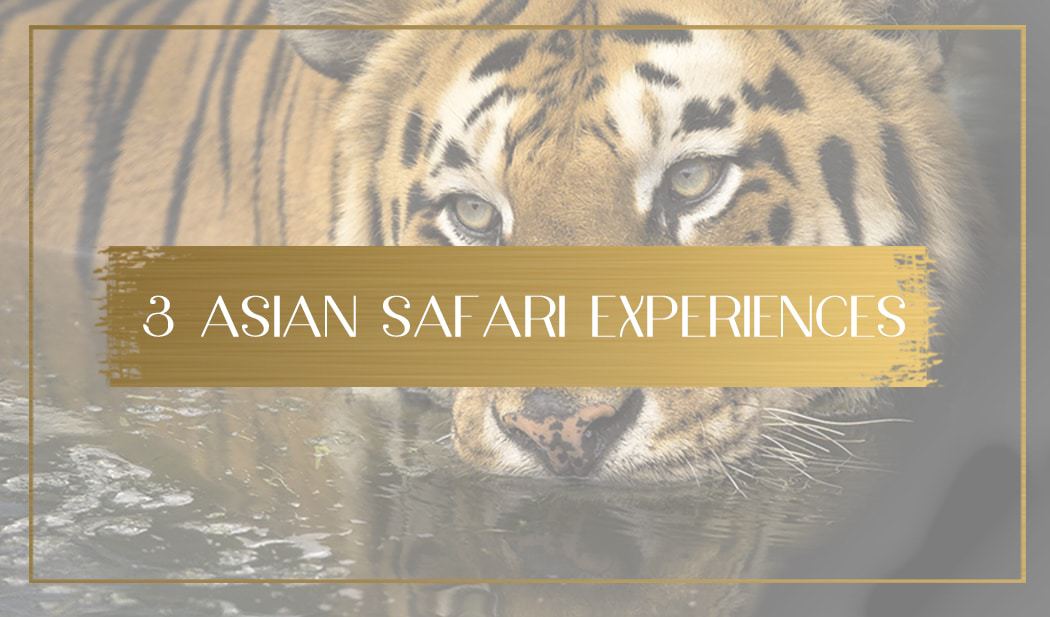When we think safari, we think Africa. But Asia also has a few destinations for wildlife lovers with splendid opportunities to observe endangered or hard to see animals in the wild. And when I talk about a safari, I do not mean spotting wildlife from a feeding platform, but rather the opportunity to jump on an open top jeep and roam around a park in search of animals that roam freely. This may mean that you do not spot any, but it also means that if you do, you will see them in their natural habitat, going about their own business. For original and fabulous safari experiences in Asia look no further and read on.
1. Tigers in Ranthambore National Park, India
It was the morning of 2nd January after a less than crazy New Year’s Eve party onboard The Mahajaraja’s Express between Mumbai and Delhi. The air was bitterly cold, with temperatures hovering around freezing, cutting winds and a sun that was struggling to warm us up. We were seated on an open top vehicle at the gates of Ranthambore National Park in India, awaiting to enter the park grounds.
Tigers were the major draw here, but they were as elusive as they were majestic. Seeing them was not guaranteed. In fact, after 3h of numbing cold, I was ready to give up and return to the warmth of our luxury train carriage. But then she appeared. Beautiful, standing tall but slightly limping, with her two calves in tow, in all her elegant glory. I immediately forgot that I could no longer feel my toes or hands under the thick woolen blankets.
Ranthambore used to be the hunting grounds of the Maharaja of Jaipur. Located in the Rajasthan region of northeast India, the park has 22 Bengal Tigers that are possible to find in the 400 sq kilometer park area. As tigers are territorial, the size of the population is starting to become an issue to their safety and there might be a need to expand the area to accommodate the new cubs born in the last few years. This is good news for visitors. At least, if your hands go numb and your toes reach frost bite status, it will all be worth it when the sighting of this beautiful animal warms your heart.
2. Leopards in Yala National Park, Sri Lanka
Incredibly hard to spot leopards have made Yala National Park their home. Nocturnal by nature and very shy, leopards tend to hide up in the tree branches during the day and come down at night to hunt with their incredible night vision. Spotting them in the foliage in Africa is very hard and, after numerous safaris, I had yet to see one in the wild until my recent trip to the Masai Mara during The Great Migration.
But in Sri Lanka, leopards are relatively easy to find and, on a very early sunrise safari excursion, you may see one or more of them in the park. What makes the leopards in Yala different and even more special than those in Africa is their status as the largest predator on the island and, as a result, their oversized frame means they don’t have to compete with other cats or large predators for food.
And if you do not spot any leopards, Yala is also known for the large herds of elephant and other wildlife species. Tip: Stay at the Uga Chena huts. My experience was amazing, read more about it here.
3. Rhinos in Chitwan National Park, Nepal
Chitwan National Park is not only Nepal’s first national protected area but is also a listed UNESCO World Heritage Site. It is a pretty park a few hours drive from Kathmandu and a destination for rhinos and, if you are terribly lucky, tigers or even leopards and sloth-bears.
We spotted a couple of bathing one-horned rhinos cooling down in the mud while on safari in the park. But we did not see a tiger, despite there being 193, many more than in Ranthambore. The tigers in Chitwan are even more elusive and hard to spot than in India. So if you visit, do so for the rhinos or the over 400 types of birds and you won’t be disappointed.
The rhinos in Chitwan amount to over 600 but have suffered from regular waves of poaching for their valuable horns. Seeing them on a trip through the jungle is not difficult. Go on a jeep safari or a walking one and avoid the elephant safaris. I did it before I was aware and had read about what really goes on for a wild elephant to be tamed to carry tourists and have never ridden one again. Ever. The best time of year for walking in Nepal is during Spring (March-May) as the temperature is warm to temperate and the blossoming flora make for an epic site.

